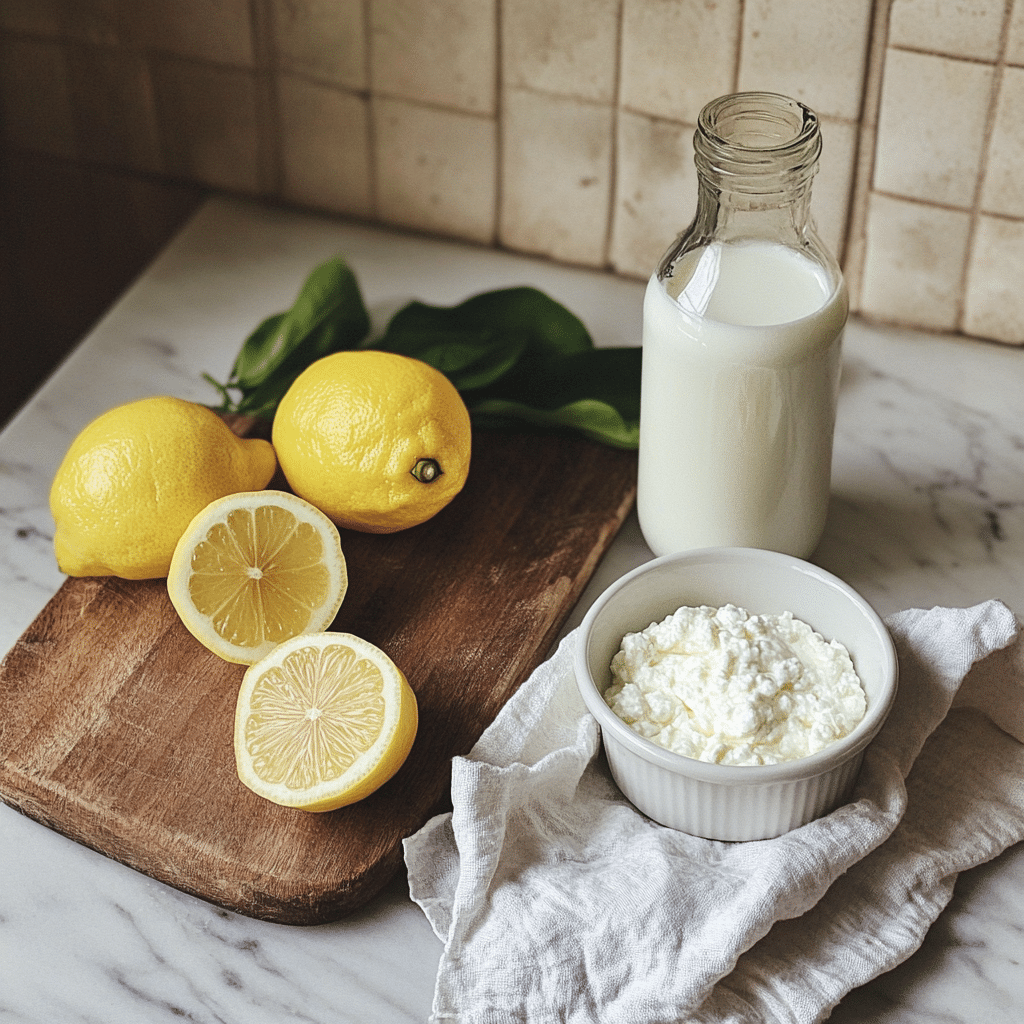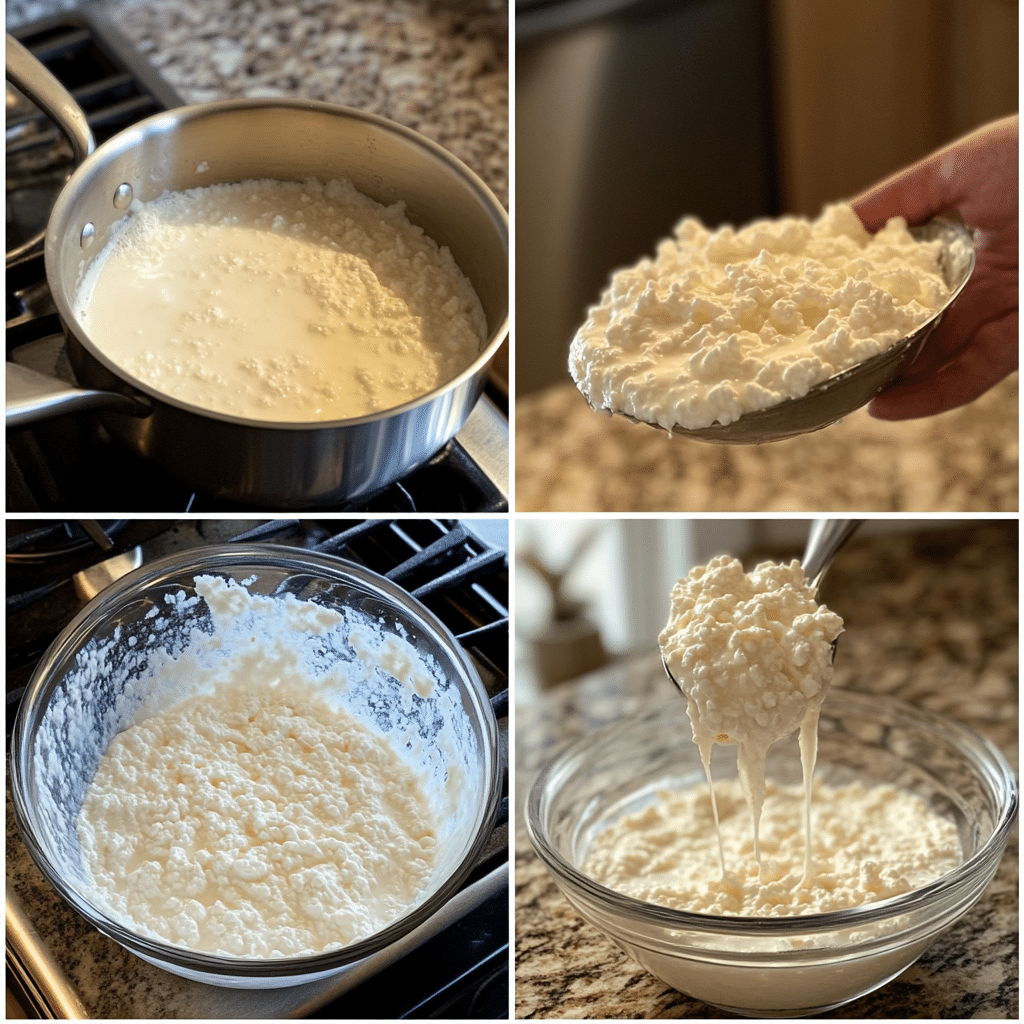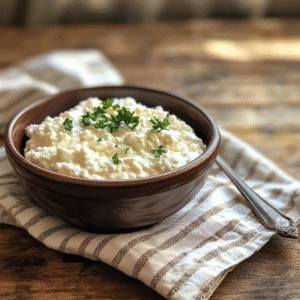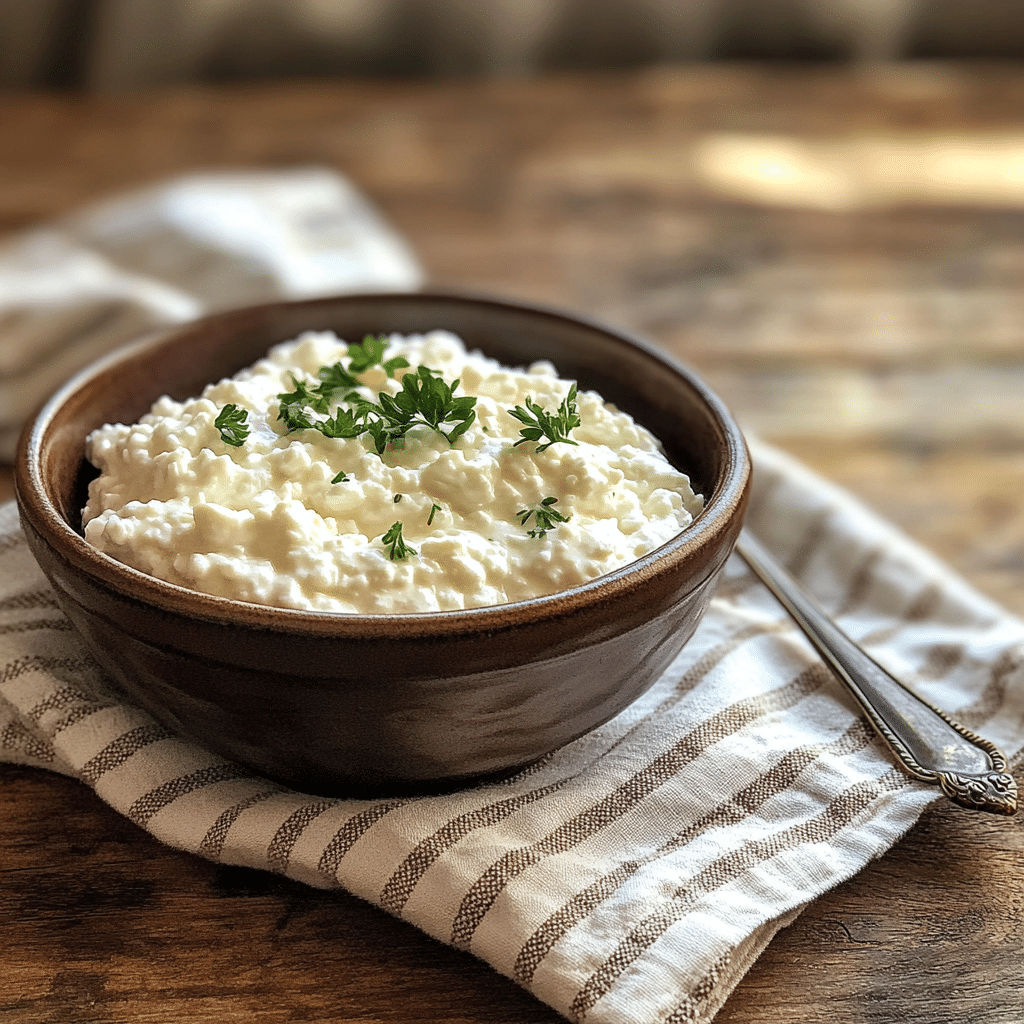Cottage cheese has always been my go-to for easy, protein-packed snacks. But have you ever checked the sodium on a store-bought tub? Yikes. Even the “lite” versions can come with more salt than you bargained for. That’s why I started making my own low sodium cottage cheese — and let me tell you, it’s a game changer.
Table of Contents
This version is creamy, customizable, and so much gentler on your body. You get the same soft, fresh curds without the heavy salt load. And the best part? You can still season it just the way you like — sweet, savory, tangy, or plain.
Why You’ll Love This Recipe
- Super low in salt, but big on flavor
- Fresh, clean ingredients with no weird thickeners
- Budget-friendly and made in under 30 minutes
- Protein-rich and satisfying for any time of day
- Customizable seasoning — you decide how much (or little!) salt to add
This low sodium cottage cheese is perfect for heart-healthy eaters and anyone watching their sodium without giving up the creamy comfort they love.
Recipe Snapshot
| Category | Breakfast / Snack |
|---|---|
| Cuisine | American |
| Prep Time | 5 minutes |
| Cook Time | 20 minutes |
| Total Time | 25 minutes |
| Yield | About 2 cups |
| Skill Level | Easy Peasy |
Ingredients
(No measurements here — full recipe card is below!)
- Whole milk or 2% milk – the creamy base
- White vinegar or lemon juice – gently curdles the milk
- No added salt – gives you total control over sodium
- Optional: plain yogurt or unsalted cream – for body and tang
Full recipe card is below.

How to Make It
Warm the Milk
Pour the milk into a heavy-bottomed pot and heat it slowly until it reaches 190°F. Keep the heat gentle — no rushing!
Chef Caroline’s Tip: Stir occasionally to prevent scorching, especially with lower-fat milk.
Add the Vinegar
Turn off the heat and stir in the vinegar or lemon juice. Almost instantly, the milk will separate into soft curds and watery whey. Let it sit undisturbed for 10 minutes.
Drain the Curds
Line a colander with cheesecloth and pour in the curds. Let them drain for 5–10 minutes — less time for a creamier texture, more for a drier one. This is where your homemade low sodium cottage cheese really takes shape.
Finish It Your Way
Transfer to a bowl. Taste the curds — you’ll notice how fresh and mild they are. Leave them as-is for no sodium, or stir in a pinch of salt or a spoonful of unsalted yogurt for body and a subtle tang.
Pro Tips for Success
- Skip the salt entirely, or add just a tiny pinch — you’re in charge here
- For creaminess, stir in a tablespoon of plain unsalted yogurt
- Use whole milk for the creamiest curds, 2% for a lighter option
- Don’t over-stir the curds once they form — they’re delicate
- Store salt-free, and season each portion to taste if needed
This is one of those small-batch wins that lets you enjoy the simplicity of real food — and this low sodium cottage cheese doesn’t compromise on taste.
Flavor Variations
- Sweet: Add a touch of honey, vanilla, or fresh fruit
- Savory: Stir in chopped herbs, garlic powder, or no-salt spice blends
- Tangy: Mix with lemon zest and unsalted Greek yogurt
- Creamy: Add a splash of unsalted cream for richness
Serving Suggestions
- Spread on whole grain toast with sliced tomato
- Mix into a veggie wrap or grain bowl
- Serve with melon or pineapple for a sweet contrast
- Add to scrambled eggs or frittatas
- Use as a high-protein dip base with herbs and lemon
Looking for more ways to use low sodium cottage cheese? It’s great in savory pancakes, veggie casseroles, and even breakfast bowls.

Make-Ahead & Storage
Make-Ahead: This low sodium cottage cheese keeps well for 4–5 days in the fridge.
Storage: Store in an airtight container. It may release a bit of whey over time — just stir and it’s good as new.
Leftovers
Use your leftovers in:
- Mashed potatoes or cauliflower mash
- Healthy veggie casseroles
- Baked pasta or stuffed shells
- Blended into smoothies for extra protein
- Whipped into savory spreads with roasted garlic
Another trick? Mix some low sodium cottage cheese with hummus for an ultra-creamy, low-salt dip.
Freezing
Not recommended. The delicate curds in low sodium cottage cheese don’t freeze well — the texture turns gritty and watery. Fresh is best!
Reheating
Cottage cheese doesn’t need reheating. Just enjoy it chilled or at room temp. If using in cooked dishes, add it near the end so it stays soft.
FAQs
Is cottage cheese naturally high in sodium?
Yes — most commercial versions are. That’s why making your own low sodium cottage cheese is such a smart move!
Can I make it completely salt-free?
Absolutely. This recipe contains zero added salt unless you add it later. Great for heart health and low-sodium diets.
Will it still taste good without salt?
Yes! The curds are naturally mild and creamy. You can season each portion to your liking — sweet, savory, or tangy.
Can I use skim milk for this recipe?
You can, but the curds will be drier. I recommend 2% or whole milk for the best texture in low sodium cottage cheese.
Final Thoughts
If you’re trying to cut back on salt without giving up comfort food, this low sodium cottage cheese is a wonderful little win. It’s mild, fresh, and full of possibilities. You can dress it up sweet or savory, or enjoy it plain and simple. Homemade doesn’t have to be hard — and your heart will thank you for it.
Want a version that’s gentle on digestion too? Don’t miss my cozy lactose-free cottage cheese — just as creamy, but easier on the belly.

Low Sodium Cottage Cheese
Equipment
- Heavy-bottomed pot
- Colander
- Cheesecloth
- Mixing Bowl
Ingredients
Main Ingredients
- 4 cups whole milk or 2% milk not ultra-pasteurized
- 3 tbsp white vinegar or lemon juice for curdling
- 2 tbsp plain unsalted yogurt or unsalted cream optional, for creaminess and tang
Instructions
- Pour the milk into a heavy-bottomed pot and heat slowly over medium until it reaches 190°F, stirring occasionally to prevent scorching.
- Turn off the heat and gently stir in the vinegar or lemon juice. Let the curds form undisturbed for 10 minutes.
- Line a colander with cheesecloth and pour in the curdled milk. Drain for 5–10 minutes depending on desired texture.
- Transfer the curds to a bowl. Leave unsalted, or add a pinch of salt or a spoonful of unsalted yogurt for extra body.

